How to Achieve Effective Land Clearing
- September 17, 2024
- 0 comment
Effective land clearing is crucial for various development projects, from agricultural expansion to construction. This process involves more than just removing vegetation; it requires careful planning and execution to ensure environmental sustainability and compliance with regulations. By following best practices and utilizing the right techniques, you can achieve efficient land clearing while minimizing negative impacts.
What is Land Clearing?
Land clearing is a fundamental process used to prepare land for various development purposes, such as construction, agriculture, or landscaping. It involves the systematic removal of trees, shrubs, and other types of vegetation from a designated area. This step is crucial for creating a clean and level surface that meets the requirements of the planned project. By clearing the land, developers can ensure that their construction work is not impeded by natural obstacles, and it also helps in reducing potential risks associated with overgrown vegetation, such as pest infestations and fire hazards. Additionally, clearing the land can enhance its visual appeal and increase its market value.
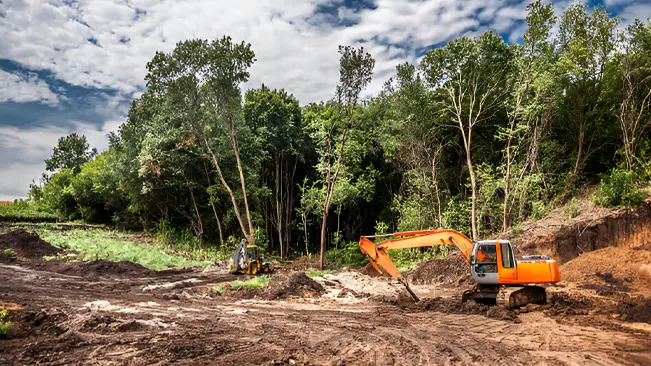
The land clearing process typically involves a range of activities, including the cutting down of trees, removal of stumps, and clearing of brush and debris. Specialized equipment, such as bulldozers, excavators, and chainsaws, is often used to expedite the work. It’s important to distinguish land clearing from routine maintenance, as it requires a more extensive approach and adherence to environmental regulations. Proper planning and execution are essential to minimize soil erosion, protect nearby water sources, and ensure compliance with legal and ecological standards. By doing so, developers can achieve a successful land clearing process that sets a solid foundation for their development projects.
Why is Land Clearing Necessary?
Agriculture
Before embarking on any agricultural project, assessing the suitability of the land for crop growth is crucial. Land clearing plays a vital role in this preparation process by removing obstacles such as debris, rocks, and invasive vegetation. This ensures that the soil is well-exposed and accessible for planting seeds, allowing them to utilize all available nutrients effectively.
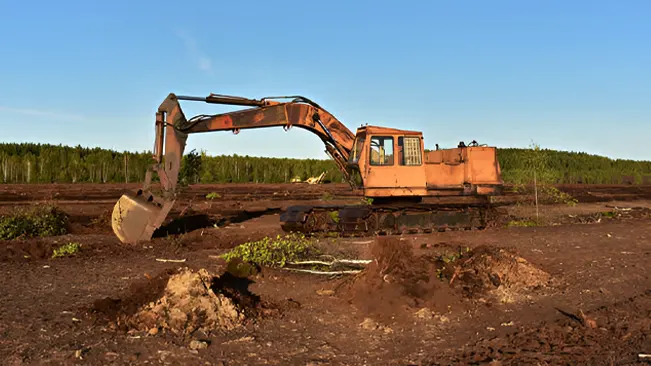
By clearing the land, farmers can create an optimal environment for crops, vegetables, and fruits to thrive. Additionally, removing wild plants and invasive species reduces competition for resources and helps prevent potential problems that could hinder plant growth.
Construction
In the construction industry, land clearing is a fundamental step to ensure a smooth and efficient building process. Before any construction begins, the land must be cleared of debris, vegetation, and other obstructions that could impede progress or cause damage. These obstacles can interfere with establishing a stable foundation and may slow down construction activities.
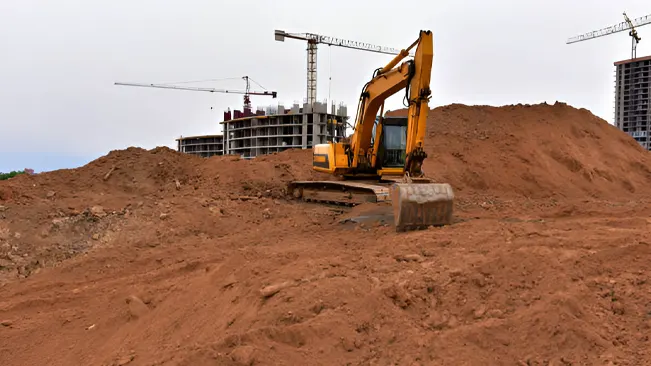
Proper land clearing is essential for adhering to development plans and ensuring that the construction site is prepared according to specifications. Beyond agriculture and construction, land clearing is also important for land management, reclamation, and restoration. It supports land conservation efforts and ensures that the land is usable and suitable for various development projects.
Essential Tools and Equipment for Successful Land Clearing
- Shovels: Essential tools for loosening soil and breaking up chunks of land.
- Chainsaws: Handy for clearing hardwoods and dense trees that are difficult to reach with a shovel.
- Bobcats: Machines used for leveling land, digging trenches, and hauling away debris.
- Heavy Duty Equipment: Includes bulldozers, excavators, and tractors for large-scale earthmoving and extensive land modification.
- Loaders: Machines designed to move rocks, dirt, and other debris.
- Brush Cutters: Tools for efficiently clearing bushes and shrubs, much faster than manual methods.
- Brush Chippers: Machines that reduce large piles of branches and debris into mulch or chips.
- Graders: Used to move soil and gravel to create smooth surfaces like roads or driveways.
- Dump Trucks: Essential for hauling away debris and materials during land-clearing projects.
- Safety Equipment: Includes helmets, gloves, safety glasses, and hearing protection to ensure worker safety.
Different Types of Land Clearing Techniques
Bulldozing
Bulldozing is one of the most widely used techniques for land clearing, leveraging the power of a bulldozer or similar heavy machinery to push and remove vegetation. This method is efficient for quickly clearing large areas of land, including trees, shrubs, and other types of foliage. The speed and effectiveness of bulldozing make it a popular choice for large-scale projects where rapid land preparation is crucial. The bulldozer’s blade can move significant amounts of material in a single pass, significantly reducing the time required to prepare the site.
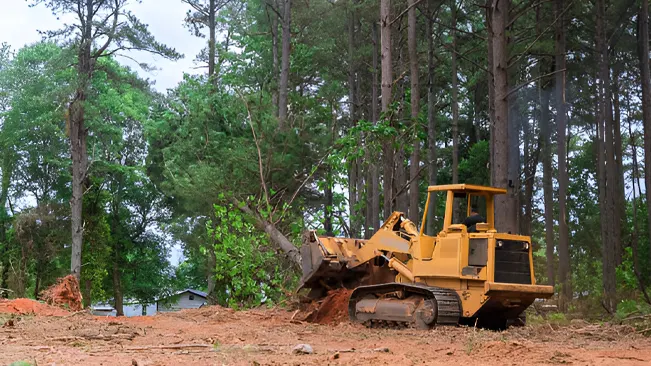
However, bulldozing has its drawbacks. The technique can be quite expensive due to the cost of heavy machinery and fuel. Additionally, bulldozing can be harsh on the land, often damaging the topsoil and leaving tree roots behind. This can lead to issues with soil erosion and vegetation regrowth, requiring additional clearing efforts if the land is not immediately used for its intended purpose. The disturbance to the soil can also affect the land’s long-term health and fertility.
Cut and Grind
The cut-and-grind method involves using specialized land-clearing equipment, such as skid steers, bush hogs, and stump grinders, to cut down vegetation and grind it into wood chips. This approach is slower compared to bulldozing but offers a more controlled and less damaging way to clear land. By grinding the vegetation into smaller pieces, this method helps to reduce the impact on the soil and can be beneficial for maintaining soil health and preventing erosion. The resulting wood chips can also be used as mulch or compost, adding value to the clearing process.
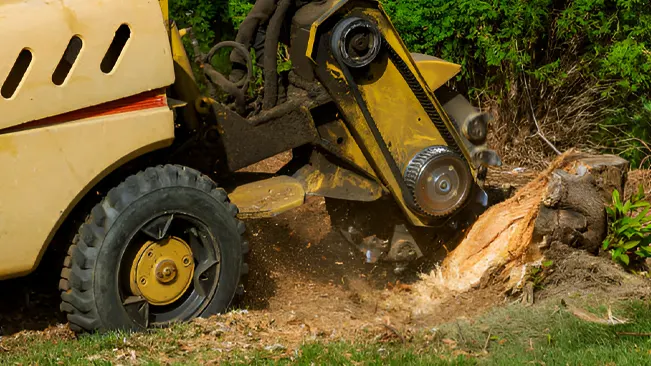
While effective, the cut-and-grind method is generally suited for land with fewer trees and less dense vegetation. It may not be the best choice for large-scale projects where speed is a priority, as the process is more time-consuming. Additionally, this method requires more maintenance and expertise to operate the equipment effectively, which can add to the overall cost of the land-clearing project.
Pullover Method
The pullover, or pulling, method is a technique where chains or cables, attached to a land-clearing machine or tractor, are used to pull vegetation out of the ground. This method is essentially the reverse of bulldozing, focusing on pulling out the entire root system along with the above-ground vegetation. This approach can be particularly effective for preventing regrowth, as it removes the roots that could otherwise lead to new vegetation. The thoroughness of the pullover method can result in cleaner and more permanent land clearing.
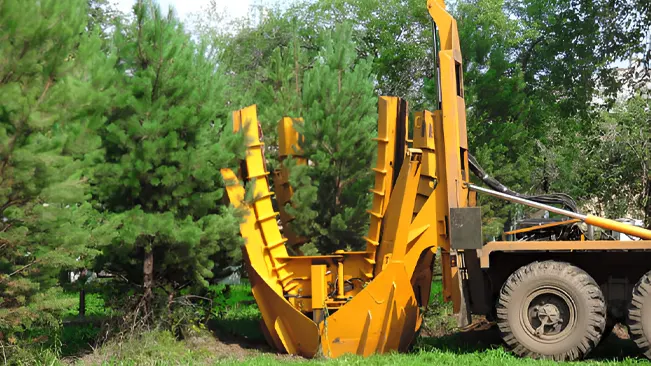
Despite its effectiveness, the pullover method is notably more time-consuming than bulldozing and requires careful operation to avoid soil disturbance. It is best suited for areas where vegetation is not excessively dense, as the process can be labor-intensive and slow when dealing with large volumes of plant material. The method also requires specialized equipment and skilled operators to ensure that the roots are effectively removed without causing excessive damage to the surrounding land.
Pile and Burn
The pile-and-burn technique involves gathering vegetation into piles and then burning it to clear the land. This method is straightforward and can be highly effective for removing large amounts of debris, especially in areas with thick vegetation and trees. The burning process helps to eliminate the collected material quickly, making it a cost-effective solution for clearing land on a smaller scale, such as a small farm or residential property.
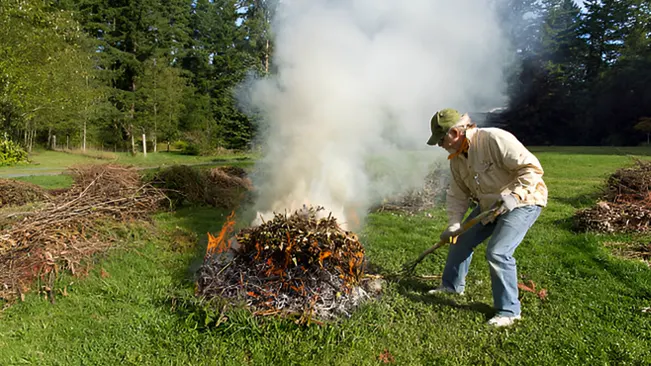
However, the pile-and-burn method comes with significant risks and drawbacks. It is the most destructive of the land-clearing techniques and poses a high risk of fire spreading to the soil, which can damage the land and negatively impact soil health. The burning process can also lead to air pollution and is often subject to strict regulations and permits to prevent uncontrolled fires. This technique is generally not recommended for large-scale or sensitive environments due to its potential for environmental harm.
6 Essential Steps to a Successful Land Clearing Operation
Step 1: Planning and Preparation
Before embarking on a land-clearing project, a comprehensive site assessment is essential. This initial step involves evaluating various factors such as the land’s size, topography, and vegetation types. Assessing the existing structures and utilities on the land is also crucial to avoid any complications during the clearing process. Understanding these elements will help you develop a detailed plan that caters to the specific requirements of your project, including determining the necessary equipment and resources. This phase is vital for setting clear objectives, budgeting effectively, and ensuring compliance with local regulations and environmental considerations.
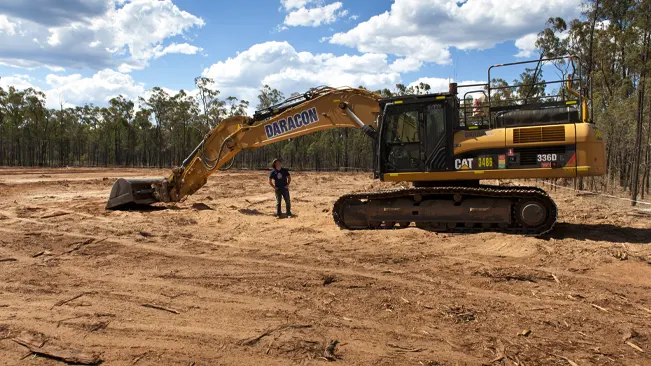
In addition to evaluating the physical characteristics of the land, it is important to identify any potential challenges or obstacles that could impact the clearing process. This might include checking for protected species, wetlands, or other environmental sensitivities. Developing a comprehensive plan will help you anticipate these issues and incorporate solutions into your project strategy. Proper planning and preparation lay the groundwork for a smoother, more efficient land-clearing operation.
Step 2: Demolishing Existing Structures
If the land has any existing buildings or structures, their removal should be one of the first steps in the clearing process. This includes dilapidated houses, old fences, or other man-made obstacles that could hinder progress. Prioritizing demolition is important because these structures can pose safety hazards and create obstacles for machinery and equipment. It is advisable to consult with local authorities to ensure that all necessary permits and regulations are adhered to before starting demolition work.
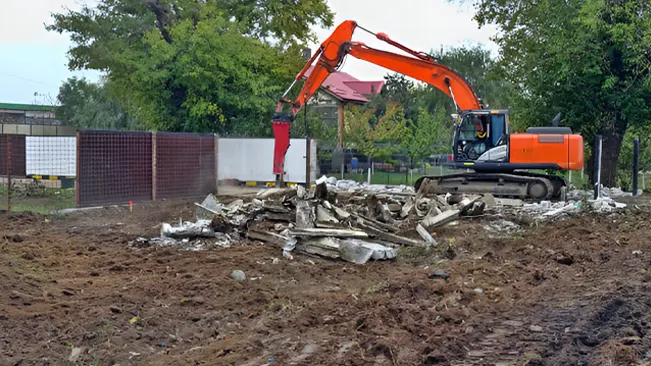
For the demolition process, consider hiring professional services if the structures are large or complex. Professional demolition teams have the expertise and equipment to safely dismantle and remove structures, minimizing risks to workers and surrounding areas. They also handle the disposal of debris and can manage hazardous materials in compliance with safety and environmental standards. Removing existing structures will help clear the way for more efficient land preparation and development.
Step 3: Tree Removal
Tree removal is often a major component of land-clearing projects and can vary in complexity depending on the size and type of trees. For large or mature trees, it is advisable to engage a professional arborist who has the expertise and equipment to safely and effectively remove them. Professional arborists are trained to handle the complexities of tree removal, including proper techniques for cutting and falling trees to avoid damage to surrounding structures and landscapes.
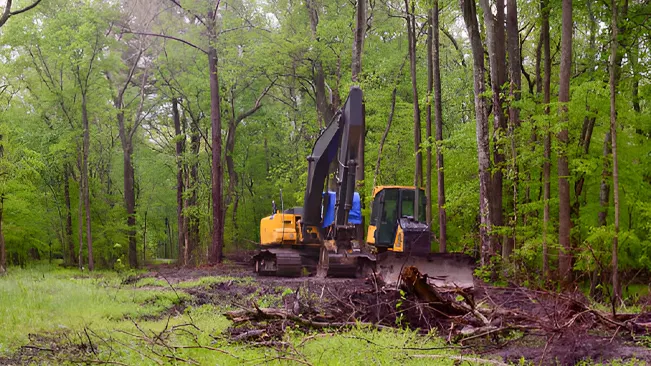
Smaller trees can be managed with appropriate tools and safety precautions. Ensure that you use the correct equipment, such as chainsaws, and wear protective gear to minimize risks. When cutting down trees, plan the fall direction carefully to avoid potential hazards. Removing trees efficiently is crucial for preparing the land for subsequent stages of clearing and development, and proper execution will help ensure a safer and more controlled process.
Step 4: Clearing Brush and Shrubs
Clearing brush and shrubs involves removing smaller vegetation that can obstruct the land-clearing process. Various methods can be employed, such as using trimmers, brush cutters, or manual tools. Brush cutters are particularly effective for dense or overgrown areas, as they can quickly clear large amounts of undergrowth. Manual tools, such as pruning shears or saws, may be used for smaller, less dense areas.

Protective clothing is essential during this phase to guard against injuries from dense, thorny, or hazardous vegetation. Wear gloves, long sleeves, and sturdy boots to prevent cuts, scratches, and other injuries. Clearing brush and shrubs will create a cleaner work area, allowing for easier access to the land and preparing it for further leveling or development activities.
Step 5: Leveling the Land
Once the land is cleared of trees and shrubs, leveling it becomes the next crucial step. This process involves creating a smooth, even surface that is suitable for construction or landscaping. Depending on the size and scale of the project, various tools and equipment can be used, such as tillers, graders, or excavators. These machines help to redistribute soil, fill in low spots, and remove any remaining uneven areas.
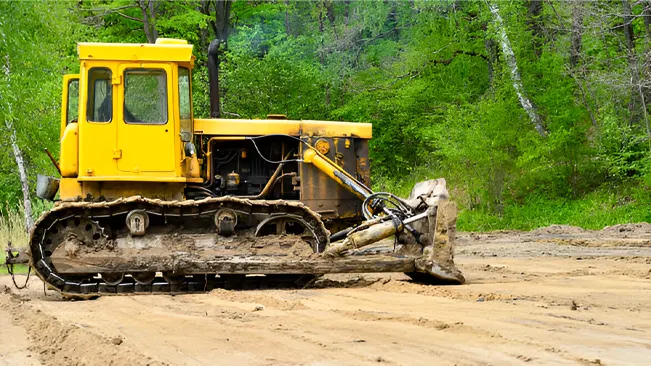
During leveling, it is important to consider factors such as the desired slope and drainage requirements. Proper grading ensures that water flows away from structures and prevents erosion. Attention to detail in this phase will help create a stable foundation for future construction or landscaping and contribute to the overall functionality and aesthetics of the land.
Step 6: Removing Debris
After the primary land-clearing tasks are complete, it is essential to gather and dispose of any remaining debris, such as branches, leaves, and other waste materials. This step ensures that the site is clean and ready for its intended use. Debris removal can involve collecting and hauling away material with equipment like loaders or dump trucks.
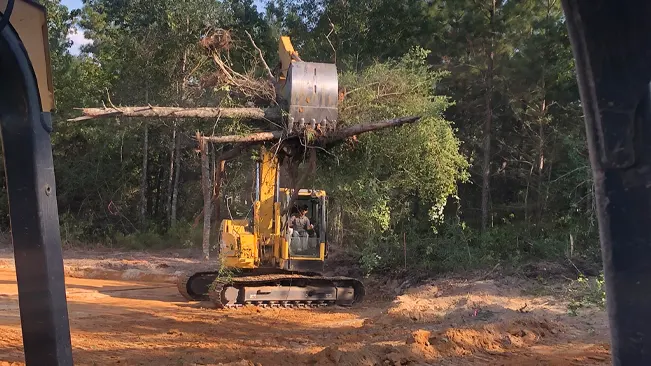
Proper disposal of debris is important for maintaining a tidy and environmentally responsible site. Depending on local regulations, debris may be sent to a landfill, recycled, or repurposed for other uses, such as mulch or compost. Ensuring that the land is free of leftover material will help prepare it for future development and contribute to a more efficient and organized land-clearing process.
Conclusion
Achieving effective land clearing requires a strategic approach, meticulous planning, and the right combination of tools and techniques. By starting with a thorough site assessment, you can tailor your clearing strategy to the specific needs of the land, ensuring that you address any potential challenges from the outset. Prioritizing the removal of existing structures, followed by systematic tree removal, brush clearing, and leveling, will help you prepare the land efficiently for its intended use.
FAQs
- What is land clearing?
Land clearing is the process of removing trees, vegetation, and other obstacles from a piece of land to prepare it for construction, agriculture, or other uses. This involves various techniques and equipment to make the land suitable for its intended purpose. - Why is planning and preparation important for land clearing?
Planning and preparation are crucial as they help you assess the land’s size, topography, and vegetation. This allows you to develop a comprehensive plan, allocate resources efficiently, and address any potential challenges before starting the clearing process. - What equipment is typically used in land clearing?
Common equipment includes bulldozers, chainsaws, bobcats, brush cutters, and heavy-duty machinery such as excavators and graders. The choice of equipment depends on the scale of the project and the type of vegetation to be cleared. - How do I decide on the best land clearing technique?
The best technique depends on factors like the size of the land, the type of vegetation, and the intended use of the land. Techniques include bulldozing, cut-and-grind, pullover, and pile-and-burn. Each has its advantages and drawbacks, so consider these factors when choosing a method. - What safety precautions should be taken during land clearing?
Safety precautions include wearing personal protective equipment (PPE) such as helmets, gloves, safety glasses, and hearing protection. Ensure that equipment is well-maintained and operated by trained personnel to prevent accidents and injuries. - How can I manage debris after land clearing?
Debris should be collected and properly disposed of or repurposed. Options include hauling it to a landfill, recycling, or converting it into mulch or compost. Proper disposal helps maintain a clean site and supports environmental sustainability. - What are the environmental impacts of land clearing?
Land clearing can impact soil health, lead to erosion, and affect local wildlife habitats. It’s important to implement practices that minimize these impacts, such as using methods that preserve topsoil and avoiding disruption to sensitive areas. - How do I handle the removal of large trees?
Large trees should be removed by professional arborists or with specialized equipment to ensure safety and efficiency. Proper techniques and equipment are necessary to manage the risks associated with cutting and falling large trees. - Can land clearing affect future vegetation growth?
Yes, improper land clearing can lead to rapid regrowth of vegetation if roots are left intact. Techniques such as pullover or cut-and-grind can help prevent this by removing roots and reducing the chance of unwanted regrowth. - What should I do if I encounter obstacles or unexpected issues during land clearing?
If obstacles or issues arise, reassess your plan and adjust your approach as needed. Consult with experts or hire professionals to address complex problems. Flexibility and adaptability are key to successfully managing unforeseen challenges.

Joel Cunningham
Forestry AuthorI'm Joel Cunningham, an expert in pruning and weed management with over a decade of experience. My skills are rooted in formal training and extensive practice, focusing on advanced pruning techniques and efficient weed control. I'm known for my quality work, precision, and deep understanding of plant health and soil dynamics. My contributions extend to educational initiatives where I share sustainable practices and advice, establishing myself as a reliable and authoritative figure in the gardening community.



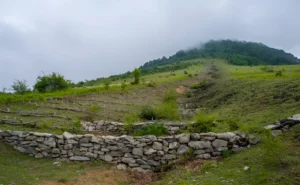
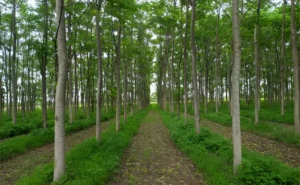

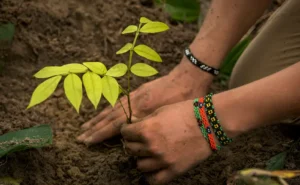



Leave your comment